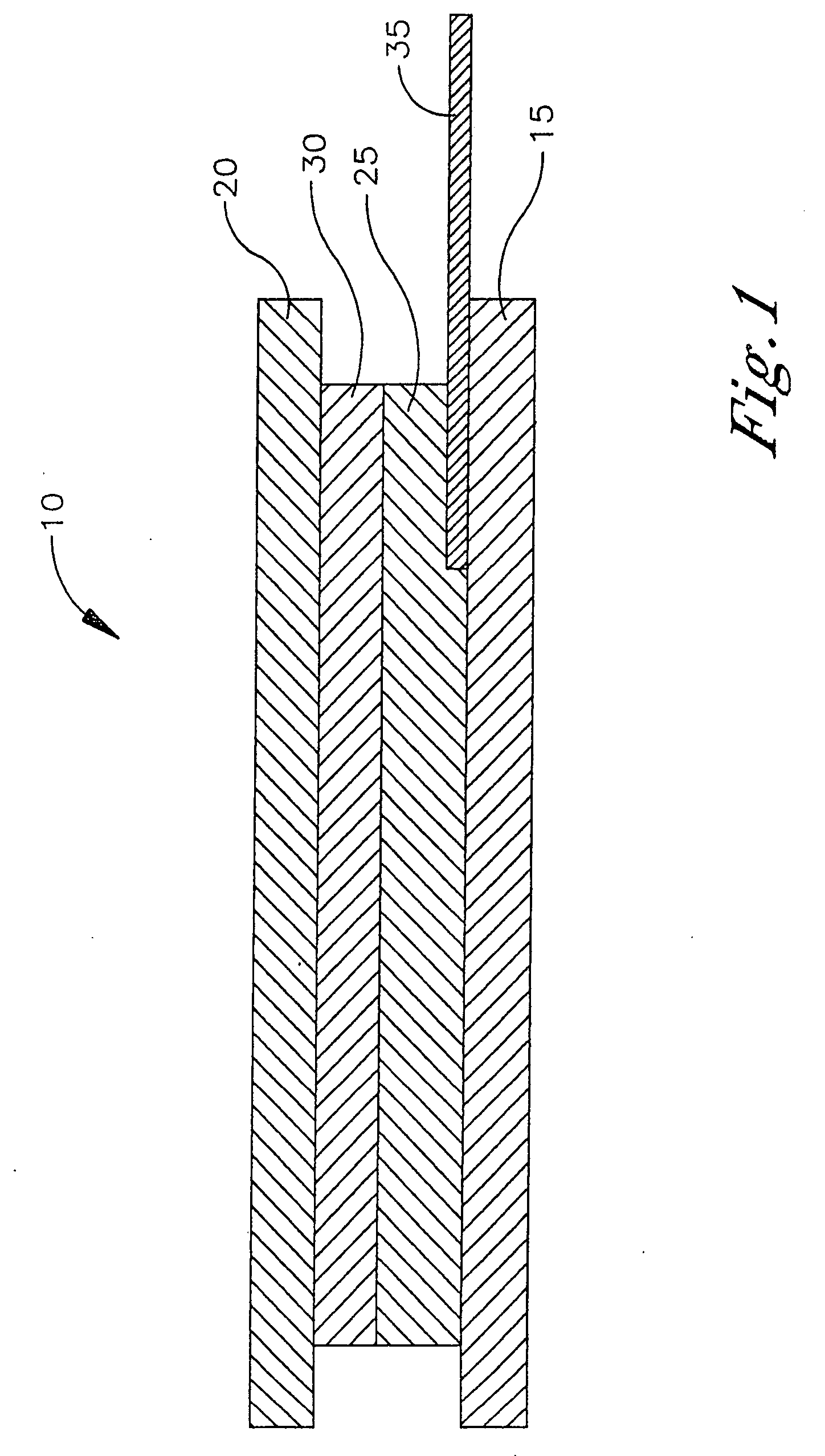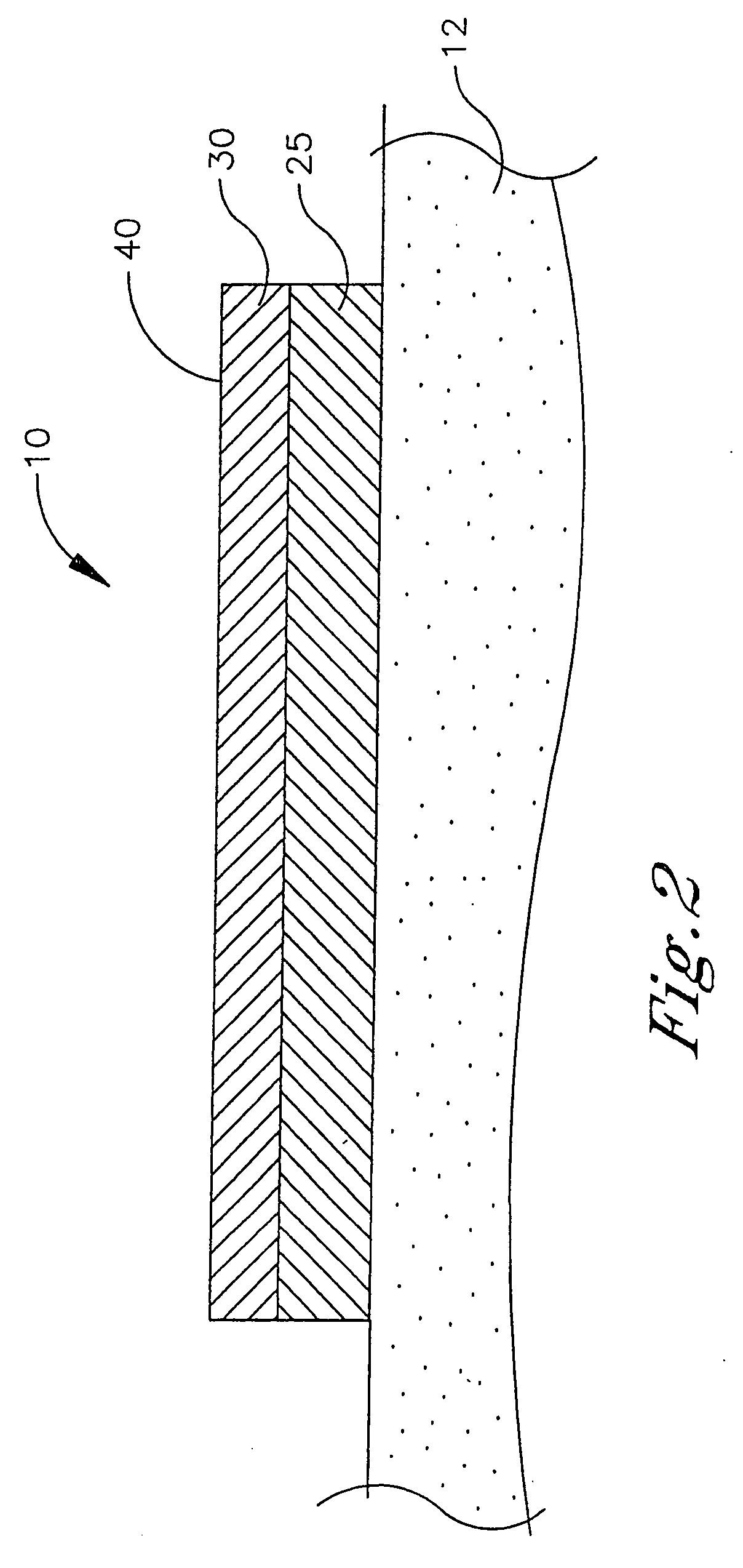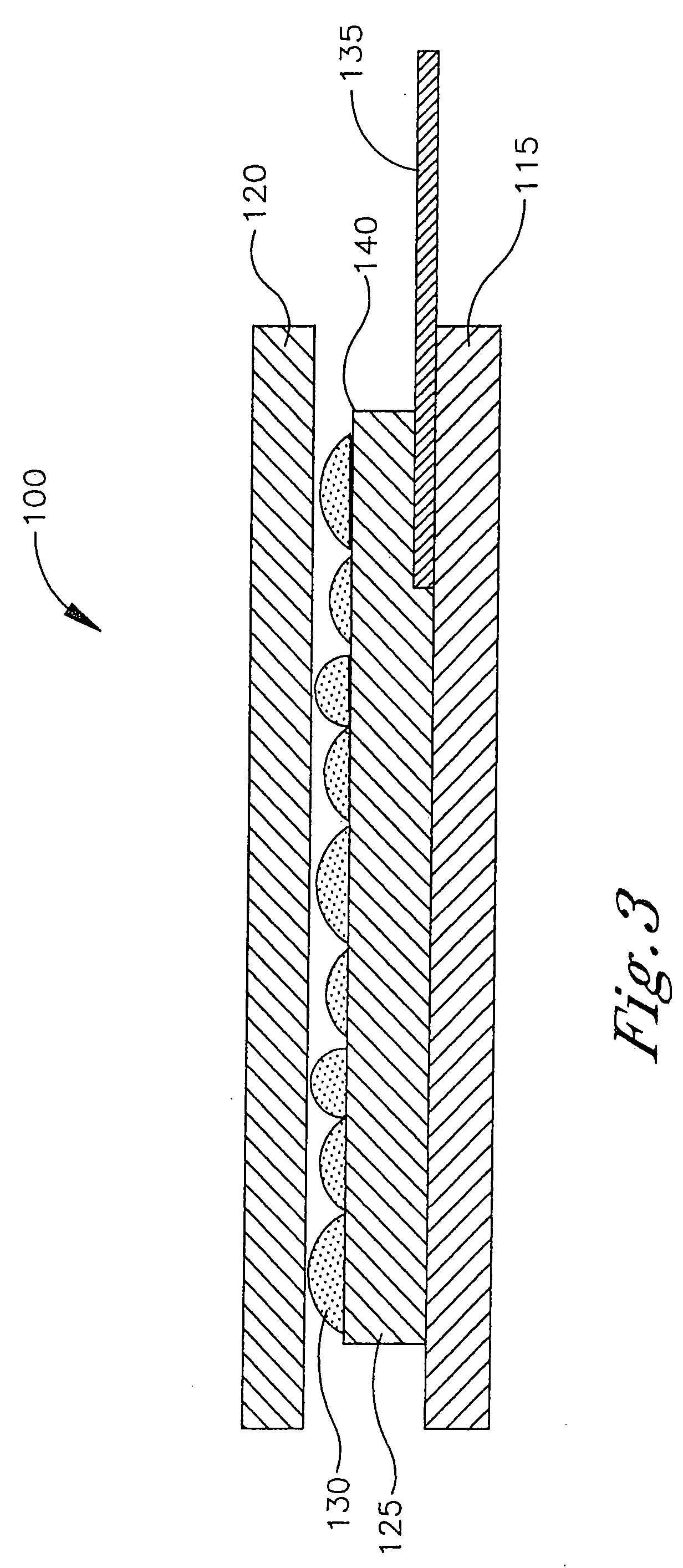Water-dispersible patch containing an active agent for dermal delivery
a technology of dermal patch and active agent, which is applied in the field of dermal patch, can solve the problems of skin maceration, limited use of glycol and some emulsifying agents, and interference with skin moisture evaporation
- Summary
- Abstract
- Description
- Claims
- Application Information
AI Technical Summary
Problems solved by technology
Method used
Image
Examples
example 1
[0133]Water-dispersible sulfopolyester A was prepared as follows: in a round bottom flask equipped with ground-glass head, an agitator shaft, nitrogen inlet and a side arm was charged with isophthalic acid, dimethyl-5-sodiosulfoisophthalate (SIP), diethylene glycol (DEG), and 1,4-cyclohexanedimethanol (CHDM), in the mole percents as set forth below. A catalyst was added and the flask was immersed in a Belmont bath at 200° C. for one hour under a nitrogen sweep. The temperature of the bath was increased to 230° C. for one hour. The temperature of the bath was increased to 280° C. and the flask was heated for 45 minutes under reduced pressure of 0.5 to 0.1 mm of Hg. The flask was allowed to cool to room temperature and the copolyester was removed from the flask and was extruded and pelletized.
[0134]Sulfopolyester A contained 18 mole percent dimethyl-5-sodiosulfoisophthalate and 82 mole percent isophthalic acid, and 46 mole percent 1,4-cyclohexanedimethanol and 54 mole percent diethyle...
example 2
[0142]A miniemulsion having a Tg of 5° C. and 10 weight % Petrolatum and COFA was prepared as follows: To a 1000 mL resin kettle equipped with a condenser, nitrogen purge, and a subsurface feed tube was added 120 g of water. A nitrogen purge was begun and the contents heated and maintained at 80° C. Coconut Oil Fatty Acid (COFA), 41 grams, (C-108 obtained from Proctor and Gamble) was preheated at 60° C. and mixed with 41 grams of pre-heated (60° C.) petrolatum (purchased as Petroleum Jelly). The COFA-Petrolatum mixture in this example contained 10% Petrolatum (by weight of the total monomers).
[0143]This mixture was slowly added to the monomer mix and stirred for 3 hours to obtain a milky looking dispersion. The monomers mix consisted of 415.0 grams styrene / 2-ethylhexyl acrylate / acetoacetoxy ethylmethacrylate / methacylic acid / acrylic acid. The weight ratio of monomers in the monomer mix was 44.5 / 43.2 / 9.4 / 0.7 / 2.2. Water (365 grams) and 18.3 grams of surfactant were premixed, then the m...
example 3
[0144]Following the procedures of Example 2 above, a miniemulsion having a Tg of 5° C. and 20 weight % Petrolatum and COFA was prepared with the following exceptions, the petrolatum amount was 82 grams.
PUM
| Property | Measurement | Unit |
|---|---|---|
| Temperature | aaaaa | aaaaa |
| Temperature | aaaaa | aaaaa |
| Temperature | aaaaa | aaaaa |
Abstract
Description
Claims
Application Information
 Login to View More
Login to View More - R&D
- Intellectual Property
- Life Sciences
- Materials
- Tech Scout
- Unparalleled Data Quality
- Higher Quality Content
- 60% Fewer Hallucinations
Browse by: Latest US Patents, China's latest patents, Technical Efficacy Thesaurus, Application Domain, Technology Topic, Popular Technical Reports.
© 2025 PatSnap. All rights reserved.Legal|Privacy policy|Modern Slavery Act Transparency Statement|Sitemap|About US| Contact US: help@patsnap.com



